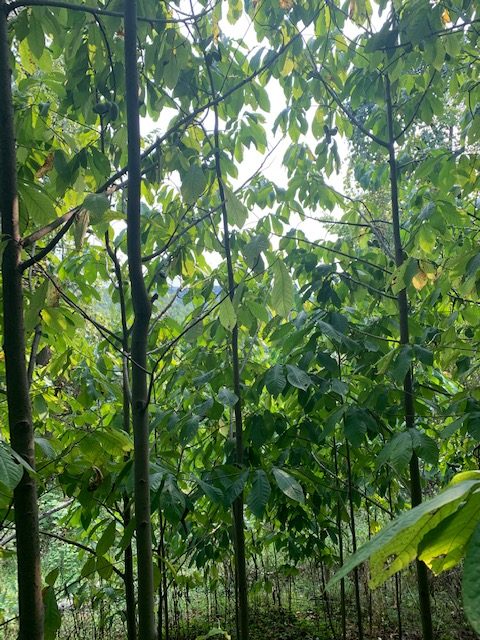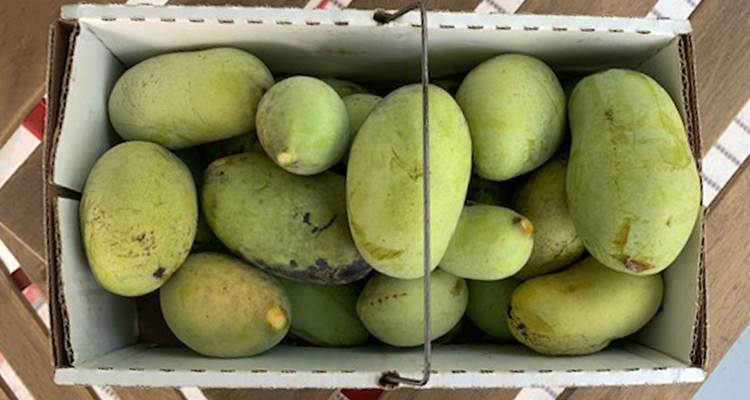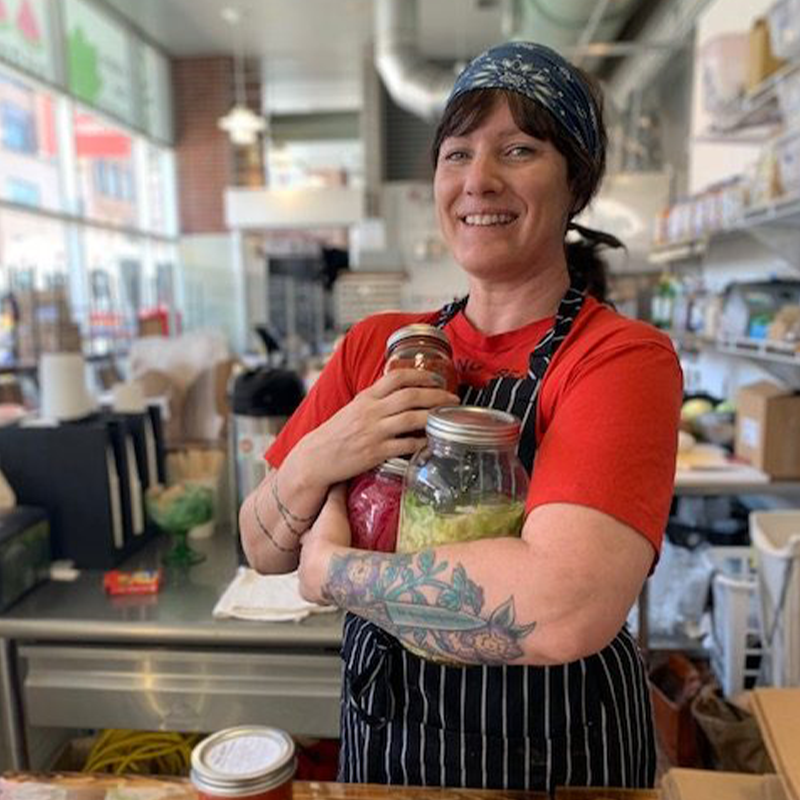“Now when you pick a paw paw or a prickly pear and you pick a raw paw, next time beware.” – The Jungle Book, 1967.
As a late-70’s baby and child of the 80’s, I had only ever heard of a paw paw in the animated film The Jungle Book during the song, “The Bear Necessities.” Flash forward to New Year’s Eve 2013 when I was moving into an old farmhouse along the Nolichucky River in East Tennessee. I made the cross country drive to my new home from Northern California, sight unseen. The folks that were waiting for me upon arrival to get the woodstove going and greet me told me there was a patch of paw paw along the river behind the house. “A WHAT?!” I thought to myself. I’d thought surely paw paws were a tropical fruit from lands far away.
What is a Paw Paw?
The paw paw, as it turns out, is the largest native tree fruit in North America, found in 26 of our states. Generally, paw paws are located in states with colder winters, growing wild in wooded areas and especially along rivers – most notably the mountain south. Paw paws are sometimes referred to as “Ohio bananas” or the “poor man’s Banana”. I liken the flavor to be in the neighborhood of banana meets mango. They are also chock full of nutritional value containing Vitamin C, iron, copper, potassium, niacin, riboflavin, calcium, phosphorus, and zinc.
The flowers are a beautiful mix between deep purple and red. The flowers hang on the tree while it still stands almost bare of leaves, they really stand out. When I was living in East Tennessee there were so many flowers on my trees and I looked forward to a very fruitful year. Through my research I learned that paw paws aren’t pollinated by bees, but rather flies and certain types of beetles. This is due to weather conditions at the time of flowering being conducive to the abundance of flies and beetles. Interestingly, paw paws also require pollen from a genetically different tree, so there must be at least two trees to have a fruiting tree.
Picking the Perfect Paw Paw
When paw paws are ripe they fall to the ground. They need to be very soft to be ripe, almost too soft to gather. They do not ripen off the tree, so don’t think you can go picking a bushel of ripe paw paws that are hard off a tree and let it ripen on your counter. The paw paw is a fickle fruit in this way. It’s also why you don’t see them commercially sold, as once they have fallen from the tree you have very few days to consume them.
When harvesting paw paws, I am a big fan of the “shake the tree” method. Once you begin to see ripe paw paws on the ground and you know they are in season, you can go to your favorite spot and lightly shake the trees to loosen the other ripe ones to collect. However, you might want to wear a hard hat for this adventure, as you never know where they are going to fall.
When foraging for paw paws on your own, look for wooded areas with well drained soil. They naturally grow along rivers and in clusters, as the small seedlings benefit from the shade and mulch provided by the fallen leaves from the larger trees. You can also connect with local farmers and online foraging groups for help when searching for this wild fruit as well.

Growing Your Own Paw Paw
As paw paw season comes to a close early October, you may consider saving some of the rather large seeds to plant on your own land. When saving paw paw seeds, there are some important things to be aware of. Unlike many other seeds, you don’t dry paw paw seeds to save them, in fact they must remain quite moist. The best way to grow a new paw paw tree is to let the seeds in the fruit fall to the ground from an existing tree. Paw paw seeds require a long period of cold stratification. This environment is created in nature by the seeds overwintering outside in the ground. You’ll typically see new seedlings from the previous year in July or August.
If you are planning to save the seeds to sow yourself at a later date, the best method is to keep them in your refrigerator clean and moist in a bag of sphagnum moss for roughly 70-100 days. Plant your seed about 1 inch deep after this period of cold. Be patient as it will take at least 2-3 weeks to germinate.
How to Eat a Paw Paw
After successfully foraging the perfect paw paw, you can cut it open and scoop out the custard with a spoon and eat it just as it is. You can also turn the custard into a delicious ice cream or gelato. I’ve even seen quick bread recipes substitution paw paw for banana, but I’ve always loved a southern chess pie so I’ve come up with a recipe to incorporate paw paw into a buttermilk chess pie. I top this pie with local berries and fresh whipped cream to serve, but honestly, it’s good all on it’s own!
Paw Paw Buttermilk Chess Pie

1 9-inch pie crust, homemade or frozen
4 eggs
1 cup sugar
3 tablespoons flour
2 tablespoons cornmeal
4 tablespoons butter, melted and cooled
1 cup buttermilk
1 cup paw paw
1 tablespoon vanilla
Pinch of salt
2-3 tablespoons brown sugar
Preheat your oven to 350° F. Blind bake the crust for 20 minutes. Remove the crust and let it cool while you prepare your filling.
Combine the eggs, sugar, cornmeal, flour, butter, buttermilk, paw paw, vanilla and salt in a blender, food processor or mixing bowl. If using a mixing bowl, use an immersion blender to prepare your mixture. Mix until it’s very well combined and smooth. Pour into prepared pie crust and sprinkle on top with brown sugar. Bake at 350° F until cooked through and just set in the middle, about 45-60 minutes. The internal temperature should read about 200° F. Let your pie cool around 4 hours before slicing.
I think it tastes even better cold, so after it cools to room temperature I like to chill it in the fridge. Fresh berries, whipped cream, ice cream and coffee are all good accompaniments to this tasty pie.
• Melissa Rebholz was born and raised in Buffalo, New York, to a Sicilian/German family. She grew up in a household revolving around food. In 2007, a summer of volunteering for GrowNYC (New York City’s Farmer’s Markets) led her down the path to culinary school at The Natural Gourmet Institute and 10 subsequent years of farming from Long Island to Sonoma to Tennessee. Working simultaneously in kitchens to support her farming habit, Melissa migrated back to the rustbelt in October of 2019 to help Grow Ohio Valley open the Public Market as the head chef. Her hobbies include foraging, baking, dinner parties and exploring her new home of Wheeling, West Virginia.



